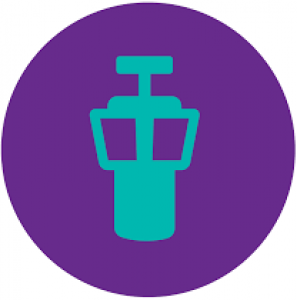Congratulations! You have just made a wise decision!
However, don’t you think it is important to know some definitions and functions of control towers before you actually start creating one? Therefore, in the upcoming sessions, I’d like to dive deeper into the subject. For instance, by highlighting some concepts, definitions, and functions of different control towers. First up: the definitions used when talking about control towers.

In the beginning, when setting up your control tower, you are likely to find yourself in discussions with others to align and design your personal control tower. To ensure that everyone is on the same page during these discussions, I would like to introduce some rather standard definitions which are often used.
Before you can actually create a control tower, you should first make a decision on the scope of the control tower. Therefore, the scope of the control tower is the first definition which I would like to treat. If talking about the scope, think of inbound, intercompany and outbound. The inbound control tower monitors and controls the flow of money, goods, and information at the start of the respective supply chain. Think here of the flows starting at your supplier and going into your own organization.
The second, the intercompany control tower is probably more suitable in a larger company with several departments treating the products. An intercompany control tower is exactly what the name suggests: a control tower looking at and overseeing the flows within one single company. These types of control towers have probably the objective of creating one smooth flow in which every stakeholder is on the same page and does what is expected of him.
Finally, there is the outbound control tower. Together with the inbound control tower, this is probably the hardest to build as it requires cooperation from your business partners. Although it is becoming more of a trend to share resources and information, still many companies are reluctant to do so, even though it could give them massive advantages. coming back to the outbound control tower, this is a control tower situated at the end of the supply chain, where the goods are being sold to your customers.
Since we have now established three different positions and scopes of control towers, it is already apparent that one single definition for a control tower is not going to work. There are simply too many variables. But by dissecting various sub-definitions, a clear image will be created about the control towers. Therefore, in the next post, I’d like to dissect the definition I have given you in the first post. Hopefully, I’ll see you there!
